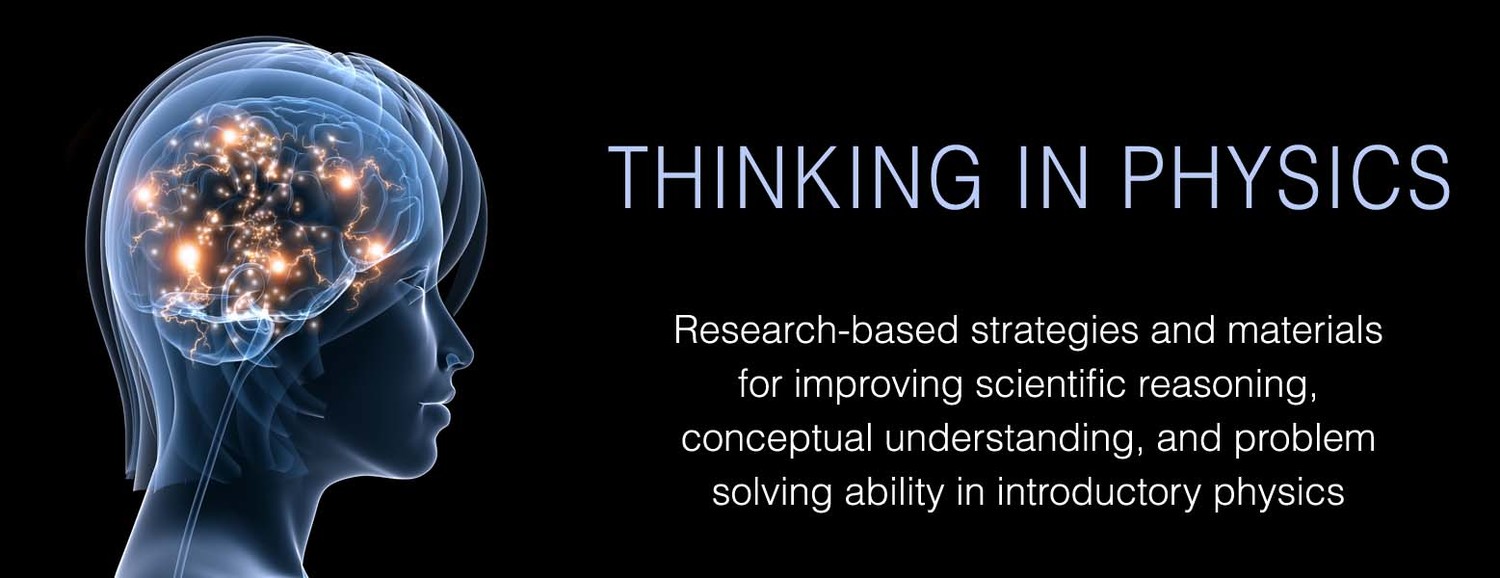Thinking in Physics Book
Why Thinking in Physics?
Physics education research over the past 20 years has shown convincing evidence that interactive engagement (IE) methods of physics instruction are essential for effective learning by the great majority of students. However, IE methods alone are not enough for many students. Research shows that a student’s ability to learn physics in an IE class is strongly correlated with the student’s scientific reasoning ability. This result has been widely replicated. Over the past 10 years I have developed a new pedagogy—Thinking in Physics (TIP)—that develops a student’s reasoning ability along with a knowledge of physics. This pedagogy has been remarkably successful, as evidenced by the graphs below (based on data from my TIP classes at LMU) and by tributes below from experts in physics education who have reviewed the Thinking in Physics book describing the TIP pedagogy. A more detailed description of evidence for TIP’s effectiveness, appropriate for instructors only, is provided on the Instructor Resources section of this website.
— Vincent Coletta, Professor of Physics, Loyola Marymount University, Los Angeles
Click to Enlarge
Click to Enlarge
“This indispensible book will permit physics instructors to instill 21st century skills in their students and better prepare them for the demands of their future careers. By combining class-tested resources with evidence from education research, this book will change how physics is taught. A must-read for every physics instructor.”
— Eric Mazur, Harvard University
“I am very impressed with the way Coletta utilizes evidence-based teaching innovations which develop both students’ scientific reasoning skills and their learning in introductory physics. In this inspiring book, Coletta carefully describes all the pedagogical approaches and tools he uses, and shows the reader how and when they are incorporated in the course. Interestingly, while his approach clearly helps all students, it is exceptionally effective in closing the gender gap in conceptual gains between females and males. I firmly believe that physics instructors all over the world can benefit from the materials and methods presented in this book.”
—Antti Savinainen, University of Jyväskylä, Finland
“Vince Coletta provides a clear overview of recent research on factors influencing students’ learning of physics. He also describes in detail the curriculum and instructional methods he has developed on the basis of that research. The results he reports for student learning through the use of those methods are very impressive, and his work merits careful study by physics instructors at all levels.”
— David Meltzer, Arizona State University
“In my judgment Vince Coletta’s Thinking in Physics should be an invaluable source for science teachers who wish to improve the thinking ability and higher-order learning of their students. As is often the case in science, Vince’s concern with his students’ thinking skills came about via a circuitous route. Fortunately, with Thinking in Physics, Vince has enabled science teachers to take easy advantage of the teaching wisdom that he has so arduously acculmulated.”
—Richard R. Hake, Indiana University
Thinking in Physics Book
The Thinking in Physics book is published by Pearson as part of their Educational Innovation series. This book is intended for instructors only. If you decide that you would like to try part or all of the TIP curriculum, the book along with the resources provided on this website will allow you to do so.
Free copy of the Thinking in Physics book (ISBN 978-0-13-393889-0) can be obtained by high school or college physics instructors by contacting their Pearson representative.
Contact Pearson Representative
Thinking in Physics Book
Thinking in Physics Online Resources
Use of this website and the materials provided here are free of charge. The instructor and student resources are password protected in order that instructor materials are only accessed by instructors. Instructors may use the form below to request the passwords to access these resources. Please complete this form using your school email address so that your teaching position may be verified. Passwords will be provided via email within 24 hours.
